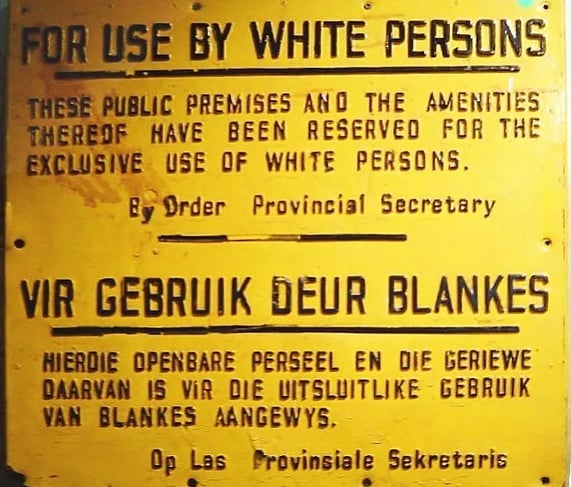It’s proven to work before, and it will work again.
Throughout history, strikes and economic non-participation have proven to be powerful tools for change. From labor strikes that led to better working conditions to boycotts that challenged unjust practices, collective action has brought about tangible results. When people unite with a common purpose, they can disrupt the status quo and demand the attention of those in power. Shutdown Tyranny is no different—it will succeed with our unity and commitment. By standing together and refusing to support the systems that harm us, we can make a lasting impact and create the change we desperately need. Together, we are unstoppable.
The Montgomery Bus Boycott:
A Blueprint for Change and How Shutdown Tyranny Can Follow in Its Footsteps
In 1955, an act of defiance in Montgomery, Alabama sparked a movement that would change history. When Rosa Parks was arrested for refusing to give up her seat on a segregated bus, it ignited the Montgomery Bus Boycott—a year-long protest against racial segregation. This powerful moment reminds us that when a committed community unites, even the most entrenched systems of oppression can be challenged. Shutdown Tyranny has the potential to do the same, creating waves of change that extend far beyond the present.
What Made the Montgomery Bus Boycott Successful?
The Montgomery Bus Boycott wasn’t just about one event—it was a collective, grassroots movement built on key principles that led to real change. By studying its success, we can apply these lessons to Shutdown Tyranny to make a meaningful impact.
Unity and Collective Action
The success of the Montgomery Bus Boycott came from the unity of the African American community. Everyone played a part—whether it was walking miles to work or organizing events. When we stand together, we are stronger than the sum of our parts, and that’s the foundation of Shutdown Tyranny.Decentralized Leadership
The boycott’s success wasn’t just due to one leader like Dr. Martin Luther King Jr.; it was a result of many local leaders, pastors, and everyday citizens stepping up. At Shutdown Tyranny, we empower everyone to take on leadership roles as needed. By sharing leadership, we remain flexible and responsive.Nonviolent Resistance
The boycott succeeded because of its commitment to nonviolence. By peacefully refusing to use the bus system, participants gained moral support from all over the world. Shutdown Tyranny follows this example, using peaceful methods like demonstrations, petitions, and campaigns to get our message across.Economic Power: A Critical Tool for Change
The Montgomery Bus Boycott showed the world how powerful economic pressure can be. By refusing to support the bus system, the African American community forced change. Similarly, Shutdown Tyranny uses economic non-participation to challenge harmful corporations. When we stop supporting companies that harm people and policies that infringe on human rights, we make our voices heard and compel change.Media and Public Attention
The boycott didn’t just stay local—it attracted national and international media attention, putting pressure on the system. Similarly, Shutdown Tyranny uses social media, blogs, podcasts, and news outlets to spread our message far and wide, ensuring our voices are amplified.




Shutdown Tyranny and the Anti-Apartheid Boycotts:
The Power of Economic Non-Participation
The Anti-Apartheid Boycotts were a global movement aimed at ending South Africa's apartheid system, which enforced racial segregation and discrimination. From the 1960s to the 1990s, countries, organizations, and individuals engaged in economic and cultural boycotts, refusing to buy South African goods, divesting from companies supporting apartheid, and banning South Africa from international sports events. These boycotts, along with internal resistance within South Africa, applied significant pressure on the apartheid regime, contributing to the eventual dismantling of apartheid and the establishment of a democratic, multiracial South Africa in the early 1990s. The movement demonstrated the power of collective action and economic non-participation in achieving social and political change.
What made the Anti-Apartheid Boycotts Successful?
Unity and Collective Action
The global Anti-Apartheid Boycotts thrived because people across the world stood together in rejecting South Africa’s oppressive system. Whether through boycotting South African goods, divesting from companies supporting apartheid, or refusing to engage in sports events with South Africa, individuals, organizations, and nations united to make their voices heard. For Shutdown Tyranny, unity is the core strength. When we come together in economic non-participation, we have the power to hold corporations accountable for policies that harm human rights.Decentralized Leadership
In the Anti-Apartheid movement, the boycott was not led by a single figure; it was driven by many different organizations, activists, and everyday citizens who took action in their communities and on the global stage. Similarly, Shutdown Tyranny embraces decentralized leadership, empowering every individual to contribute to the movement in ways that align with their strengths, whether it's through social media campaigns, organizing local boycotts, or spreading awareness. By sharing leadership, we keep the movement dynamic and responsive to changing times.Nonviolent Resistance
The Anti-Apartheid Boycott was rooted in peaceful resistance, using economic power as a tool to bring about social and political change without resorting to violence. The international boycott showed the world that nonviolent methods—such as consumer boycotts and disinvestment—could dismantle systems of oppression. Like the Anti-Apartheid movement, Shutdown Tyranny stands firm in nonviolent resistance. We will use peaceful methods, including boycotts, petitions, and public demonstrations, to ensure our message is heard and to challenge the harmful policies of corporations and lawmakers.Economic Power: A Critical Tool for Change
The Anti-Apartheid Boycotts were a clear demonstration of how economic pressure can force political change. By boycotting South African goods and divesting from companies that supported apartheid, the global community showed that economic non-participation could have a profound impact on an unjust regime. Similarly, Shutdown Tyranny uses economic power to push back against corporations and policies that infringe on human rights. By withdrawing support from companies that roll back DEI initiatives or fund harmful policies, we can create the kind of economic pressure needed to demand change.Media and Public Attention
The Anti-Apartheid Boycotts not only put pressure on the South African government but also brought international attention to the injustice of apartheid. Media campaigns and public protests amplified the voices of those fighting for equality and human rights. Shutdown Tyranny can learn from this by using social media, blogs, podcasts, and news outlets to spread our message far and wide, ensuring that our movement garners global attention and forces corporations and lawmakers to respond.




Shutdown Tyranny and the 2011 Wisconsin Protests:
The Power of Economic Non-Participation and Collective Action
The 2011 Wisconsin Protests were sparked by Governor Scott Walker's proposal to curtail collective bargaining rights for public sector unions, which would limit workers' ability to negotiate for better wages, benefits, and working conditions. In response, thousands of workers, union members, students, and community activists took to the streets and gathered in the state capitol in Madison for weeks of peaceful protests. The movement was driven by a desire to protect workers' rights and push back against policies perceived as unfair and detrimental to the working class. It became a national symbol of the struggle for labor rights, showing the power of collective action, solidarity, and nonviolent resistance in the face of political and economic challenges. Through mass protests, public demonstrations, and political lobbying, the movement sought to prevent the dismantling of union protections and emphasized the importance of maintaining workers' rights in the face of corporate and political pressures.
Unity and Collective Action
The 2011 Wisconsin protests, sparked by Governor Scott Walker’s proposal to curb union bargaining rights, saw a massive mobilization of workers, students, and community members. Hundreds of thousands gathered to protest and take a stand for labor rights, showing that collective action can be a powerful tool to resist oppressive policies. For Shutdown Tyranny, unity is equally crucial. By joining together in collective action—whether through boycotts or demonstrations—we have the strength to challenge corporations and policies that threaten human rights and equality.Decentralized Leadership
While figures like union leaders were prominent in the Wisconsin protests, the movement was built on a foundation of decentralized leadership. It was not controlled by one person but driven by many voices, including everyday citizens, students, teachers, and labor activists. Shutdown Tyranny operates in a similar way by embracing decentralized leadership. We empower members to lead in their communities and take action in their own ways, keeping the movement adaptable and responsive to the needs of the moment.Nonviolent Resistance
The Wisconsin protests were overwhelmingly peaceful, with demonstrators organizing rallies, sit-ins, and marches to express their opposition to the proposed legislation. This nonviolent approach was essential to the movement’s success, drawing widespread support. Shutdown Tyranny is committed to using nonviolent tactics, such as economic boycotts, peaceful demonstrations, and petitions, to promote social change and bring attention to our cause without resorting to violence.Economic Power: A Critical Tool for Change
The Wisconsin protests showcased the power of economic leverage in the fight for worker rights. By organizing labor strikes, calling for boycotts of businesses that supported anti-union policies, and withdrawing support from pro-Walker politicians, protesters demonstrated the impact of economic pressure. Similarly, Shutdown Tyranny uses economic non-participation to challenge harmful corporations and policies. By withdrawing support from companies that undermine DEI initiatives or contribute to harmful practices, we can apply the same kind of pressure to achieve our goals.Media and Public Attention
The 2011 Wisconsin protests gained national media attention, bringing the issue of union rights and workers' dignity into the public spotlight. This coverage played a key role in galvanizing support and putting pressure on politicians. Shutdown Tyranny can follow this model by leveraging social media and other platforms to spread our message, ensuring that our movement reaches a wider audience and gains the attention it deserves.




Together, We Can Make Change Happen
By uniting, empowering each member, and using the proven methods of nonviolence, economic pressure, and legal advocacy, Shutdown Tyranny can follow in the footsteps of the Montgomery Bus Boycott and create a lasting impact. Join us in building a movement that’s stronger, more resilient, and capable of making the change we need.
What side of history will you be on?
Learn More via Substack, Bluesky, & Telegram
Join us in solidarity, and Unite in Resistance!